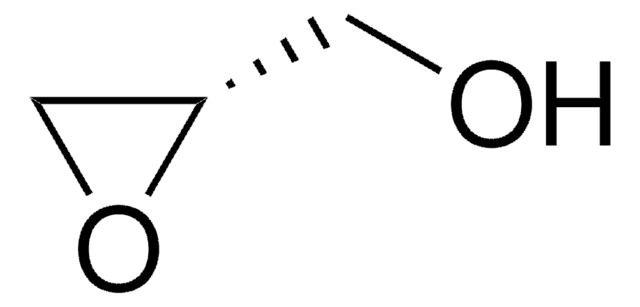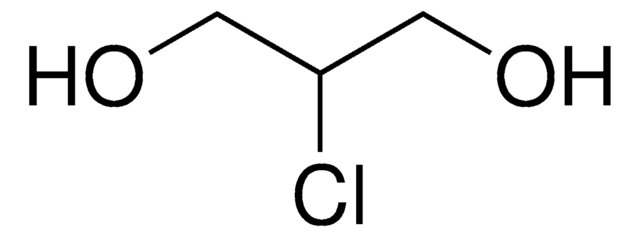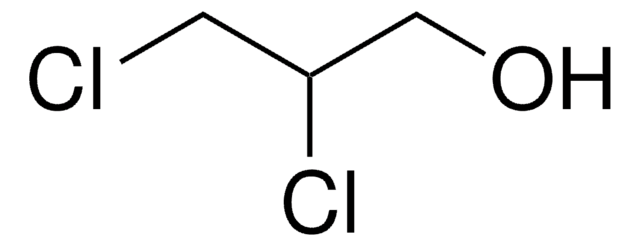G5809
Glycidol
96%
Synonym(s):
(±)-Glycidol, (±)-Oxirane-2-methanol, 2,3-Epoxy-1-propanol, Glycerolglycide
About This Item
Recommended Products
vapor density
2.15 (vs air)
Quality Level
vapor pressure
0.9 mmHg ( 25 °C)
Assay
96%
form
liquid
autoignition temp.
780 °F
impurities
≤2% diglycidyl ether
refractive index
n20/D 1.433 (lit.)
bp
61-62 °C/15 mmHg (lit.)
density
1.117 g/mL at 25 °C (lit.)
shipped in
wet ice
storage temp.
2-8°C
SMILES string
OCC1CO1
InChI
1S/C3H6O2/c4-1-3-2-5-3/h3-4H,1-2H2
InChI key
CTKINSOISVBQLD-UHFFFAOYSA-N
Looking for similar products? Visit Product Comparison Guide
Related Categories
Application
Signal Word
Danger
Hazard Statements
Precautionary Statements
Hazard Classifications
Acute Tox. 2 Inhalation - Acute Tox. 4 Dermal - Acute Tox. 4 Oral - Carc. 1B - Eye Irrit. 2 - Muta. 2 - Repr. 1B - Skin Irrit. 2 - STOT SE 3
Target Organs
Respiratory system
Storage Class Code
6.1A - Combustible acute toxic Cat. 1 and 2 / very toxic hazardous materials
WGK
WGK 3
Flash Point(F)
161.6 °F
Flash Point(C)
72 °C
Personal Protective Equipment
Regulatory Listings
Regulatory Listings are mainly provided for chemical products. Only limited information can be provided here for non-chemical products. No entry means none of the components are listed. It is the user’s obligation to ensure the safe and legal use of the product.
PRTR
Class II Designated Chemical Substances
FSL
Group 4: Flammable liquids
Type 3 petroleums
Hazardous rank III
Water soluble liquid
ISHL Indicated Name
Substances Subject to be Indicated Names
ISHL Notified Names
Substances Subject to be Notified Names
JAN Code
G5809-5G:4548173953502
G5809-1KG:
G5809-5KG:
G5809-10KG:
G5809-100G:4548173953489
G5809-500G:4548173953496
G5809-2.5KG:
G5809-BULK:
G5809-VAR:
Certificates of Analysis (COA)
Search for Certificates of Analysis (COA) by entering the products Lot/Batch Number. Lot and Batch Numbers can be found on a product’s label following the words ‘Lot’ or ‘Batch’.
Already Own This Product?
Find documentation for the products that you have recently purchased in the Document Library.
Chromatograms
suitable for GCsuitable for GCsuitable for GCOur team of scientists has experience in all areas of research including Life Science, Material Science, Chemical Synthesis, Chromatography, Analytical and many others.
Contact Technical Service









